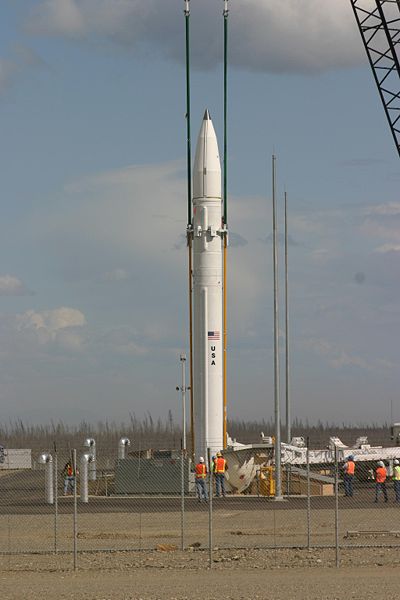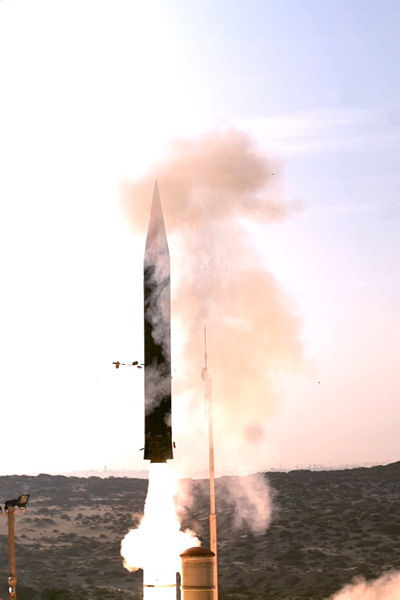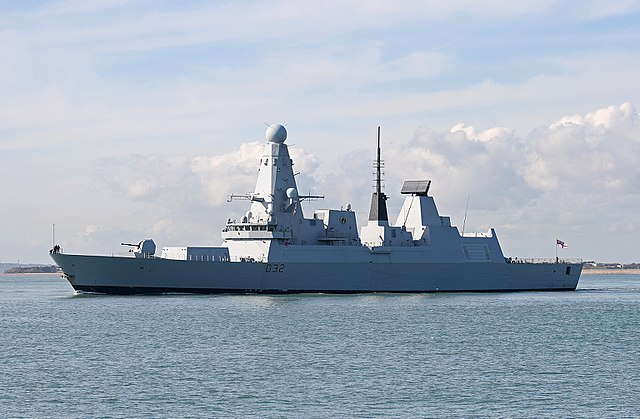An anti-ballistic missile (ABM) is a surface-to-air missile designed to counter ballistic missiles. Ballistic missiles are used to deliver nuclear, chemical, biological, or conventional warheads in a ballistic flight trajectory. The term "anti-ballistic missile" is a generic term for a system designed to intercept and destroy any type of ballistic threat; however, it is commonly used for systems specifically designed to counter intercontinental ballistic missiles (ICBMs).
A Ground-Based Interceptor of the United States' Ground-Based Midcourse Defense system, loaded into a silo at Fort Greely, Alaska, in July 2004
Israel's Arrow 3
Royal Navy Type 45 destroyers (pictured), and French Navy and Italian Navy Horizon and FREMM frigates operate Aster 30 missiles
AD-1 missile test on 2 November 2022.
A ballistic missile (BM) is a type of missile that uses projectile motion to deliver warheads on a target. These weapons are powered only during relatively brief periods—most of the flight is unpowered. Short-range ballistic missiles (SRBM) typically stay within the Earth's atmosphere, while most larger missiles are exo-atmospheric. The largest ICBMs are capable of full orbital flight. These weapons are in a distinct category from cruise missiles, which are aerodynamically guided in powered flight and thus restricted to the atmosphere.
Replica V-2
Trident II SLBM launched by ballistic missile submarine






